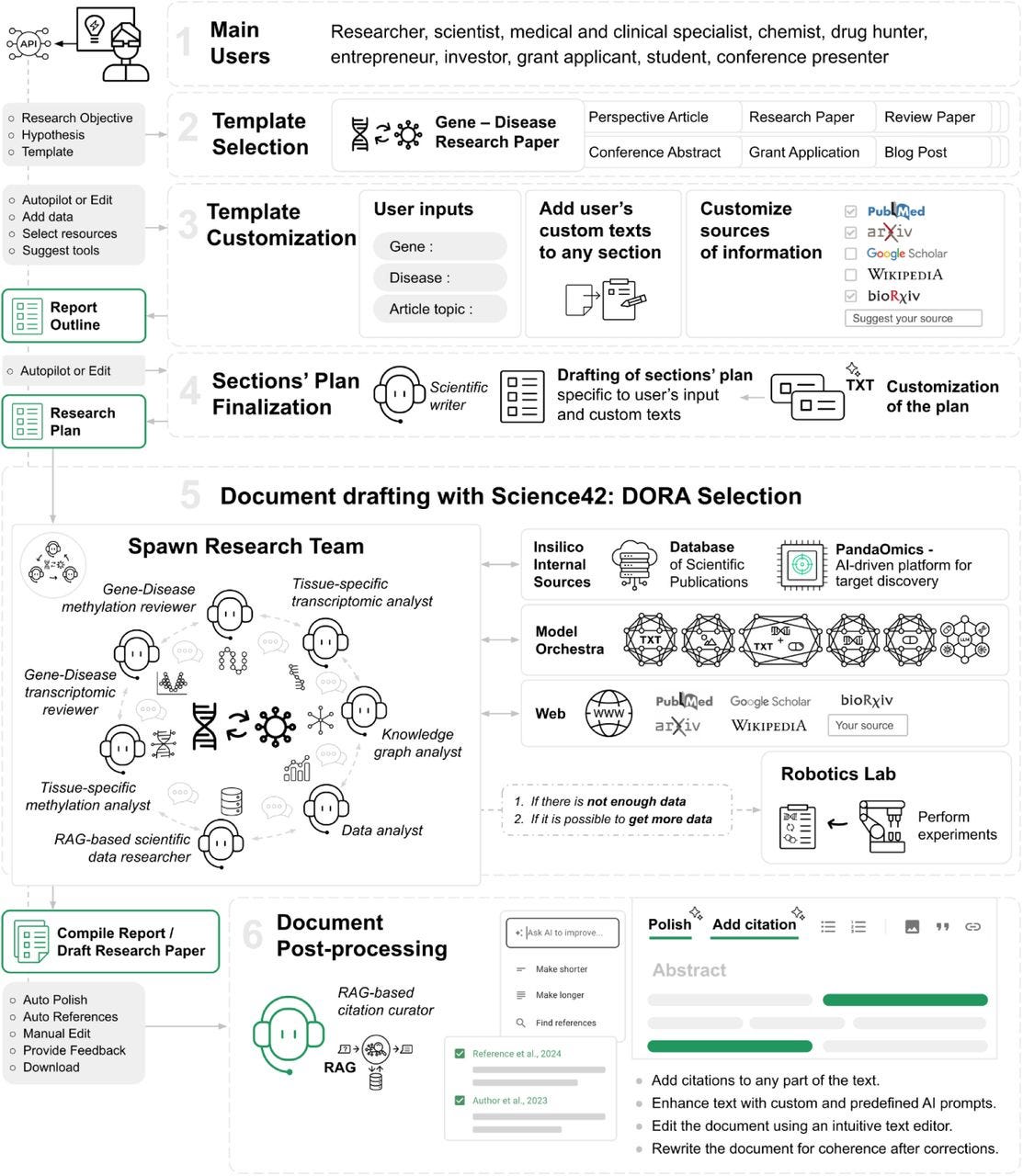AI in Life Science: Weekly Insights
Weekly Insights | March 16, 2025
In this issue:
Welcome back to your weekly dose of AI news for Life Science!
This week, we have some exciting new models lined up for you:
scBaseCamp: AI-Powered Single-Cell Data Repository for Biomedical Research 🧬💻
MorphoDiff: Cellular Morphology Painting with Diffusion Models 🖼️
Dive into these game-changing innovations and explore how they are transforming the biotech and healthcare landscapes!
scBaseCamp: AI-Powered Single-Cell Data Repository for Biomedical Research 🧬💻
A major challenge in single-cell research is the fragmentation and inconsistency of datasets, making large-scale AI-driven biological modeling difficult. Enter scBaseCamp, an AI-powered single-cell data repository designed to continuously discover, annotate, and standardize scRNA-seq data. Developed at the Arc Institute, it uses an LLM-driven hierarchical workflow to process raw sequencing data into a harmonized, high-quality resource for AI-driven research. By ensuring consistent data processing and reducing analytical variability, scBaseCamp provides a reliable foundation for AI-driven cell modeling, disease research, and precision medicine.
🔨 Applications:
Biomedical Research & Drug Discovery - Provides high-quality single-cell data for AI-driven disease modeling, biomarker discovery, and therapeutic target identification.
Genomics & Evolutionary Biology - Enables large-scale comparative analyses across 21 organisms and 72 tissues, improving insights into gene regulation and evolutionary processes.
Machine Learning & Virtual Cell Models - Supplies harmonized single-cell data for training AI-driven virtual cell models, improving predictions of cellular behavior and disease progression.
📌 Key Insights:
Largest AI-Curated Single-Cell Repository - Currently hosts over 230 million cells across multiple species, surpassing other public single-cell repositories like CZ CELLxGENE and Human Cell Atlas
AI-Powered Data Discovery & Standardization - Uses SRAgent, an LLM-driven system that automates dataset retrieval, metadata extraction, and annotation, ensuring consistent processing of all datasets.
Enhanced Cross-Study Comparability - Standardizes alignment tools, reference genomes, and read counting strategies, reducing batch effects and improving data reliability across studies.
Scalable & Continuously Expanding - Automatically integrates new single-cell datasets from public archives, ensuring a constantly growing and high-quality resource for biomedical AI applications.
DORA: Multi-agent Virtual Research Team for Scientific Exploration Discovery and Automated Report Generation 💻
Insilico Medicine presents the latest version of DORA AI Scientist, a multi-agent AI system designed to automate research workflows and draft publication-ready scientific reports. The tool integrates a virtual research team, played by LLM agents specialized in different roles such as computational biologists, omics experts, scientific writers, and more. By hierarchically organizing AI agents, DORA ensures coherent, structured research outputs while minimizing human effort in literature searches and writing.
🔨 Applications:
Manuscript Drafting – Automates the generation of scientific reports, reducing the burden of writing.
Drug Discovery Research – Integrates with PandaOmics and biomedical knowledge graphs for target identification.
Biomedical Research Acceleration – Helps generate hypotheses, analyze omics datasets, and conduct systematic literature reviews.
📌 Key Insights:
A virtual team of scientists - DORA features several LLM agents specialized in roles such as computational biologist, scientific writer, and more. Each agent has access to tools such as PandaOmics, public databases, and literature search. The agents interact together to carry out analyses, fact check results, and write the report.
Customizable Templates - Supports 20+ pre-defined templates for research articles, grants, patents, and medical case studies.
Citation Finder & AI Enhancements - Uses Retrieval-Augmented Generation (RAG) to fetch accurate references and allows AI-assisted text refinements.
Real-Time Collaboration - Users can interact with LLM agents, pause/resume workflows, and make live adjustments.
MorphoDiff: Cellular Morphology Painting with Diffusion Models 🖼️
Understanding cellular responses to external stimuli is critical for parsing biological mechanisms and advancing therapeutic development. High-content image-based assays provide a cost-effective approach to examine cellular phenotypes induced by diverse interventions, which offers valuable insights into biological processes and cellular states. Introducing MorphoDiff, the first diffusion-based generative pipeline for high-resolution cellular morphology prediction
🔨 Applications:
Drug Discovery and Virtual Screening – Enables in silico prediction of cellular responses to chemical and genetic perturbations, accelerating the identification of potential drug candidates without extensive lab experiments.
Cellular Mechanism Studies – Facilitates understanding of gene function and drug mechanisms by visualizing perturbation-specific morphological changes, aiding in hypothesis generation for biological pathways.
High-Content Phenotypic Profiling – Generates high-resolution, biologically interpretable images for systematic analysis of cellular phenotypes, supporting target validation and mode-of-action studies.
📌 Key Insights:
Perturbation-Specific Morphology Capture – Generated images faithfully replicated rare phenotypes (e.g., bi-nucleated cells) and matched ground-truth morphological patterns for compounds like Epothilone B and Cytochalasin D.
Generalization to Unseen Compounds – Demonstrated robust performance on held-out drugs (e.g., Forskolin), leveraging structural similarity embeddings to predict phenotypes without prior exposure.
Scalability and Flexibility – The framework’s adaptability to diverse datasets (RxRx1, BBBC021) and perturbation types highlights its potential for broad application in drug discovery and systems biology.
Did you find this newsletter insightful? Share it with a colleague!
Subscribe Now to stay at the forefront of AI in Life Science.
Connect With Us
Have questions or suggestions? We'd love to hear from you!
📧 Email Us | 📲 Follow on LinkedIn | 🌐 Visit Our Website




